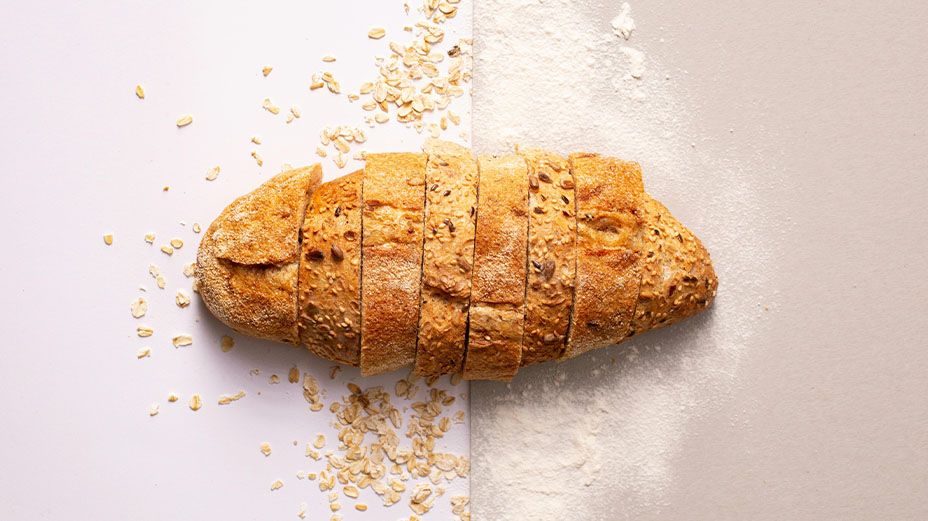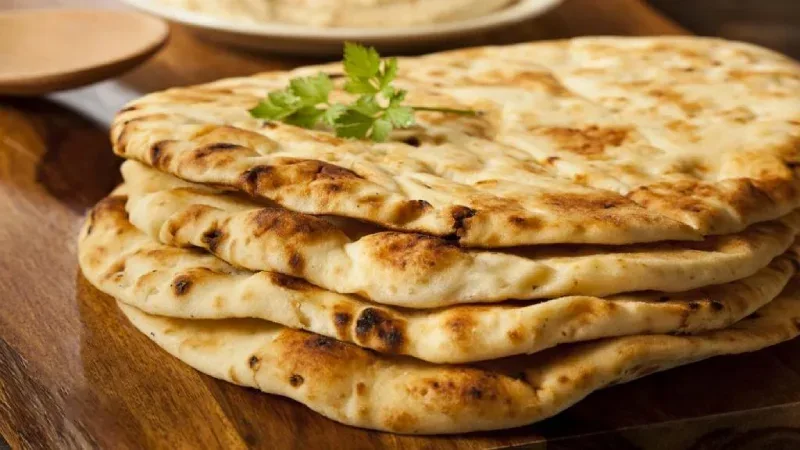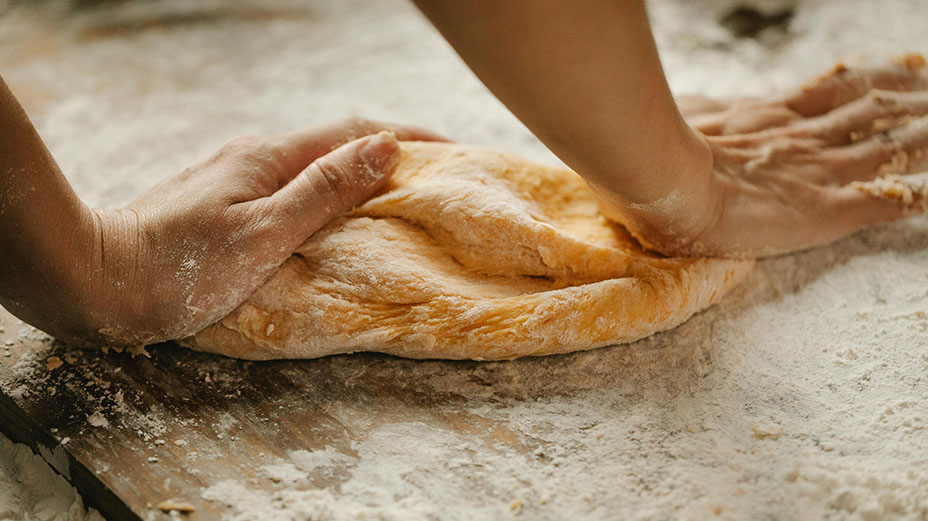What is fancy bread flour and why is it one of the most popular breads in the world? Fantasy is a name that was accidentally given to non-native breads in Iran and entered the industry and people’s nutrition from different countries. The first type of bread was “bulki”, which was brought to Iran from the Soviet Union by an immigrant in the 1920s. In the future, stay with Fadak flour to talk more about fantasy bread flour.
Today, however, the most famous and popular fantasy bread is the “baguette” bread, which came to our tables from France; But in general, “fantasia” refers to breads that are bulky and puffy and are baked with white flour. These breads quickly gained a lot of fans; compared to common breads that were prepared locally or industrially in Iran, they had a beautiful appearance and better taste, and became the biggest example of “new that comes to the market” in recent decades.
Read more: Nol flour 1
However, baguette is not the only fancy bread flour in the market, and white flour is not the only difference between these breads. If you care about your health and nutrition and would like to know the characteristics of the bread you eat at least once a week and how it is prepared, this article will answer you.

What are the most popular fancy breads?
Estimating the number of types of bread in the world is not an easy task; Every country, nationality and even city has its own special bread. All these breads are not known in Iran and have not been welcomed. The most popular industrial breads or fancy breads in Iran are six types.
French baguette bread: This French bread is long and thin and has a crispy crust and a fluffy and soft core. We know a model of it in Iran; But in France, baguettes have several models and functions. This type is slightly wider and even longer than sandwich bread.
Sandwich bread: This bread is usually used to make sandwiches and is cut into squares or rectangles and is even served with soup. The French believe that this type of bread is delicious even if it is prepared by beginners!
Hamburger bread: This bread is used to serve hamburgers and that is why it is round. This type of bread is thicker than sandwich bread and has different sizes.
Toast: This bread is cut into slices and is mostly used for breakfast or as a snack; of course, it is also available uncut in the market and you can cut it at home depending on your needs and food.
Read more: Ard Nol 2
Rye bread: This bread is prepared with rye flour; Rye is one of the types of grain, the bread cooked with it has a strong taste and is different from wheat and barley.
Barley bread: This bread is prepared with barley flour and its consumption is recommended in slimming diets and for diabetic patients. Its color is a bit dark and its texture is different from wheat flour breads.
From another point of view, fancy breads are divided into two categories; White and dark breads!
White breads made with white wheat flour; They are like baguette, sandwich, hamburger and toast.
Dark breads are breads made with wholemeal or rye flour. These grains give a dark color to the final product.
The difference between fancy and traditional bread flour
Bran extraction is the most important difference between fancy bread flour and traditional bread. The process of this work and the amount of bran taken from the seeds are important in the color, taste and texture of the bread that comes out of the oven. The amount of water absorption, the final price and the amount of gluten of these flours are also different. The difference between these two types of flour is summarized in the table below.
|
ویژگی |
آرد نان فانتزی | آرد نان سنتی |
| سبوسگیری | 21 تا 23 درصد | تا 30 درصد |
| رنگ | روشنتر | تیرهتر |
| طعم | ملایم | قوی |
| مورد استفاده | نانهای حجیم و پفدار | نانهای صاف و پهن |
| گلوتن | زیاد | کم |
| جذب آب | زیاد | کم |
| قیمت | زیاد | کم |
| فیبر | کم | زیاد |
| گلوتن | زیاد |
کم |
نانهای فانتزی با آرد سفید به دلیل کالری و قند بالا، برای مصرف دائمی و هر روزه توصیه نمیشود. با این وجود نانهای فانتزی تیرهرنگ به دلیل سبوس و فیبر بیشتری که دارند، برای سلامتی مفیدترند.

آرد نان فانتزی برای پیتزا مناسب است؟
جواب بله است؛ آرد نان فانتزی را میتوان برای تهیه خمیر پیتزا استفاده کرد. آرد نانهای فانتزی به دلیل داشتن گلوتن بالا، خمیر پیتزا را پفدار و حجیم میکند. ضمن اینکه طعم و عطر دلپذیری هم به نان پیتزا میدهد. امروزه این آردها به شکل آماده، برای مصارف مختلف، در بازار موجود است و به همین دلیل کار با آرد فانتزی آسانتر شده است و بهراحتی میتوان با آن خمیر پیتزا تهیه کرد.
با این حال، استفاده از آرد فانتزی برای پیتزا در خانه، برای همه آسان نیست و کمی نان پیتزا را ضخیمتر میکند. نمونههایی که در بازار و به شکل صنعتی آماده شده و به بستهبندی شده عرضه میشود، نان تردتری را ممکن است به شما بدهد. در نهایت انتخاب آرد نان فانتزی یا آرد مخصوص پیتزا سلیقهای است و در طعم، تفاوت چندانی با هم ندارند.
بیشتر بخوانید: آرد تافتون و لواش
فرآوری آرد نان فانتزی
آرد فانتزی بهطور صنعتی و در کارخانجات آردسازی تولید میشود. در این کارخانهها، دانههای گندم پس از تمیز شدن، به روشهای مختلف آسیاب و سبوسگیری میشوند. آرد فانتزی از مغز دانه گندم و بخشهایی از آندوسپرم (بخش مغذی دانه) تهیه میشود.
- در گام اول گندم از مزارع جمعآوری و به کارخانه منتقل و در سیلوها ذخیره میشود. اولین مرحله برای آسیاب کردن، تمیز کردن دانههاست؛ ناخالصیهایی مانند سنگ، خاک و دانه های خراب از گندم جدا می شوند.
- قدم دوم شروع آسیاب است. گندم تمیز شده با استفاده از سنگها یا آسیابهای غلطکی در چند مرحله آسیاب میشود. در هر مرحله، غلطکها به تدریج نزدیکتر و فشار بیشتر میشود تا دانهها به طور کامل خرد شوند. آسیاب کردن، گندم را به آرد و سبوس تبدیل میکند.
- مرحله سوم، سبوسگیری انجام میشود. آرد و سبوس با استفاده از الکهایی مخصوص از هم جدا میشوند؛ معمولا سبوس جدا شده به عنوان خوراک برای دام و طیور جمعآوری میشود.
- چهارمین گام، بافر یا مخلوط کردن است. ابتدا آرد در سیلوهای مخصوص ذخیره میشود. برای حفظ کیفیت و یکنواختی، آردها را از سیلوهای مختلف، با هم مخلوط میکنند. در این مرحله با توجه به محصول نهایی، مواد مغذی و افزودنیهای مجاز مانند اسید فولیک، آهن و انواع ویتامین B به آرد اضافه میشوند.
- پنجمین مرحله یا آخرین لاین در کارخانههای تولید آرد نان فانتزی ، بستهبندی است. آرد فانتزی در کیسههایی با اندازههای مختلف به صورت اتوماتیک پُر و دوخته و در نهایت تاریخ تولید و انقضا روی کیسهها چاپ میشود.
لازم است بدانید در تمام مراحل تولید، کیفیت آرد بهطور دقیق کنترل میشود. آزمایشگاههای مجهزی در کارخانهها ایجاد شده که کیفیت آرد را از نظر رنگ، بو، طعم، رطوبت، پروتئین و گلوتن بررسی میکنند. در نهایت فقط آردی که از نظر کیفیت تاییدشده باشد، بستهبندی و به بازار عرضه میشود.




